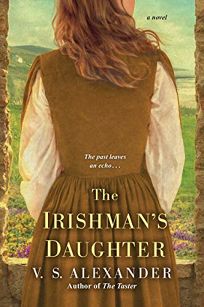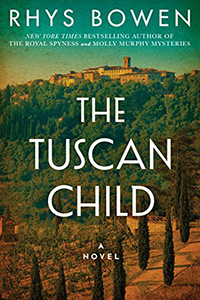April brought me a boatload of good historical novels! I’m not sure what next month holds, but it will be difficult for May to match what I got to read in April. If you know me, you know that historical fiction is my preference in literature. It’s a joy when so many good new historical novels are released (or reach the top of my waitlist at the public library) at the same time.
Simon the Fiddler by Paulette Jiles
You may recall that I read News of the World, by Paulette Jiles in October 2017 and blogged about it on November 6, 2017 in Some Good New Books. Also, I blogged about a favorite quote from that book on May 14, 2018 in The Lampasas County Asylum. Perhaps you’ve seen the movie that’s been made by the same name, News of the World, starring Tom Hanks. I haven’t seen it yet.
One of the things I like about Paulette Jiles’ writing is how she manages to sneak in bits of humor. Simon the Fiddler is by no means a comedy, yet Simon’s sense of humor comes through and makes him a very likeable fellow.
The story takes place at the end of the American Civil War. Simon has managed to escape being conscripted by the Confederate Army until a barroom brawl in Victoria, Texas in March 1865. His life of flitting around making somewhat of a living playing his fiddle is briefly interrupted by a stint in a Confederate regimental band.
After the war, Simon sets his sights on buying land in Texas, building a house, and settling down to create a family. Along the way he meets up with a variety of musicians and a beautiful young lady from Ireland whose life in America is so awful she wishes she’d never left her home country. She steals Simon’s heart.
Every time you think things can’t get worse for poor Simon, something worse happens. Such is the bedrock of fiction, and so goes this tale.
I invite you to come along for the ride with Simon, his companions, and the love of his life. Does he get what he’s been seeking all his life by the time you reach the last page of the book? You’ll have to read it for yourself to find out.
I enjoyed listening to Simon the Fiddler on CD. The professional reader is Grover Gardner.
Yellow Wife, by Sadeqa Johnson
Sadeqa Johnson was inspired to write this historical novel after learning about the life of Mary Lumpkin. Mary Lumpkin was a 12-year-old slave of Robert Lumpkin in Virginia. She bore him at least five children.
Ms. Johnson did extensive research into the lives of Robert Lumpkin and Mary Lumpkin and has woven a gripping novel that will keep you turning pages and yearning for something good to happen to Mary. The book contains many scenes of unthinkable beatings and the torture of slaves. Mr. Lumpkin owned a jail where slaves were sent for punishment, and Mr. Lumpkin delighted in inflicting that punishment. He absolutely delighted in it. I didn’t know that slave jails existed until I read this book.
Ms. Johnson put herself in the body of Mary Lumpkin and, thereby, puts the reader there, too. As much as is possible, Ms. Johnson helps us to put ourselves in the shoes of a slave woman who is at the mercy of her master and is put in an awkward position with her fellow slaves because she is seen as the favored one. All the while, her heart is broken because she can’t be with the man she truly loves and who truly loves her. For Mr. Lumpkin, Mary is a wife of convenience.
Yellow Wife is not a pleasant read, but it is based on a true story – one we as Americans should know about and not forget. It’s part of our history.
The Nature of Fragile Things, by Susan Meissner
I highly recommend this historical novel set in San Francisco in 1906 – the year of the Great San Francisco Earthquake.
Sophie lives in the north of Ireland and seeks a better life in America. She joins her brother in New York City, but he soon falls in love and moves to Canada. Sophie’s life as a single young female Irish immigrant in the big city leaves her desperate for a better life. She answers a mail-order bride ad and travels to San Francisco to marry a widower who has promised her a stable life and a ready-made family: a five-year-old daughter. Sophie’s dream has come true. She longs to be a mother, but she’s been told she can physically never have her own child.
From the beginning in San Francisco there are clues that her husband, Martin Hockings might not be all he’s cracked up to be on paper, but Sophie tries her best to adapt and be patient with him and his daughter, who won’t talk.
From there, the book takes off in unexpected directions – and the earthquake hasn’t even occurred yet. Hold on for the ride as a pregnant stranger shows up at Sophie’s door one day asking for a Martin Hockings. Don’t jump to conclusions, though; it’s not what you’re thinking. Sophie’s life unravels quickly from this point. Her discoveries take her and Martin’s little girl through the harrowing earthquake and on a journey to Arizona see what they can find out about the girl’s dead mother.
I hope I haven’t told you too much. There are more secrets in this book than “all get out.”
(If the idiom, “all get out” leaves you scratching your head, please read my March 29, 2021 blog post for clarification: #Idiom: As All Get Out.)
If you are a fan of historical fiction, you’ll love The Nature of Fragile Things, by Susan Meissner!
The Lost Girls of Paris, by Pam Jenoff
I don’t know why it took me until now to read The Lost Girls of Paris, by Pam Jenoff. I added it to my To Be Read List after reading a good review of it on https://jennifertarheelreader.com/ way back in February 2019.
You might recall that I blogged about The Orphan’s Tale, by Pam Jenoff in my August 7, 2017 blog post, Late July Reading. I enjoyed that book, so that adds to the mystery of why I waited until last month to read The Lost Girls of Paris. Being historical fiction, Ms. Jenoff’s books are right down my alley.
The Lost Girls of Paris transports you to France in 1944. It’s about young women who volunteered to be radio operators behind enemy lines during World War II. Participants were carefully chosen and trained. They knew they were putting their lives on the line in the Allies’ attempt to defeat Nazi Germany.
A woman looks in an abandoned suitcase at Grand Central Station in New York City and discovers photographs of 12 women. She sets out on a mission to find the owner of the suitcase, and she wants to know something about the women in the photographs. Her research leads her to Washington, DC and on an on-the-ground search for the woman who trained and led the group.
There are twists, turns, courage, fear, loyalty, and betrayal in this novel that will keep you turning the pages.
By the way, Pam Jenoff has a new historical novel on the way: The Woman with the Blue Star is scheduled for release on May 4, 2021. I’m on the waitlist for it at the public library.
The Lost Apothecary, by Sarah Penner
I listened to The Lost Apothecary, by Sarah Penner on CD. I usually don’t enjoy novels that take two different timelines, but this one really held my interest. A secret apothecary in London in 1791 caters to women who need an herbal way to get rid of the oppressive men in their lives. An innocent mistake made by a 12-year-old girl who takes a serious interest in learning the apothecary trade turns the 18th century story on it’s head and threatens to be the end of the hidden business.
In comes a present-day young woman, Caroline, from the United States. She has a variety of personal issues to sort out and, early in her visit to London finds an intriguing medicine bottle on the bank of the Thames. This launches Caroline on a mission to find out all she can about the apothecary whose stamp in on the bottle.
The novel is well-researched and is sure to be of interest to anyone with a curiosity about herbal remedies and herbal poisons used in secret in 18th century England.
Since my last blog post
I’ve been dealing with an allergic reaction to poison oak. It hasn’t been fun, but the prednisone injection is helping. I’d forgotten just how intense the itching sensation is once one is exposed to the innocent-looking plant.
Until my next blog post
I hope you have a good book or two to read this week. Maybe you’ll get to read one of the three books I wrote about today. Next Monday I’ll blog about the other books I read in April.
Make time to relax and enjoy a hobby.
Stay safe and well – and please wear a mask when necessary.
Note: May is Get Caught Reading Month! Have you been caught yet?
Janet













